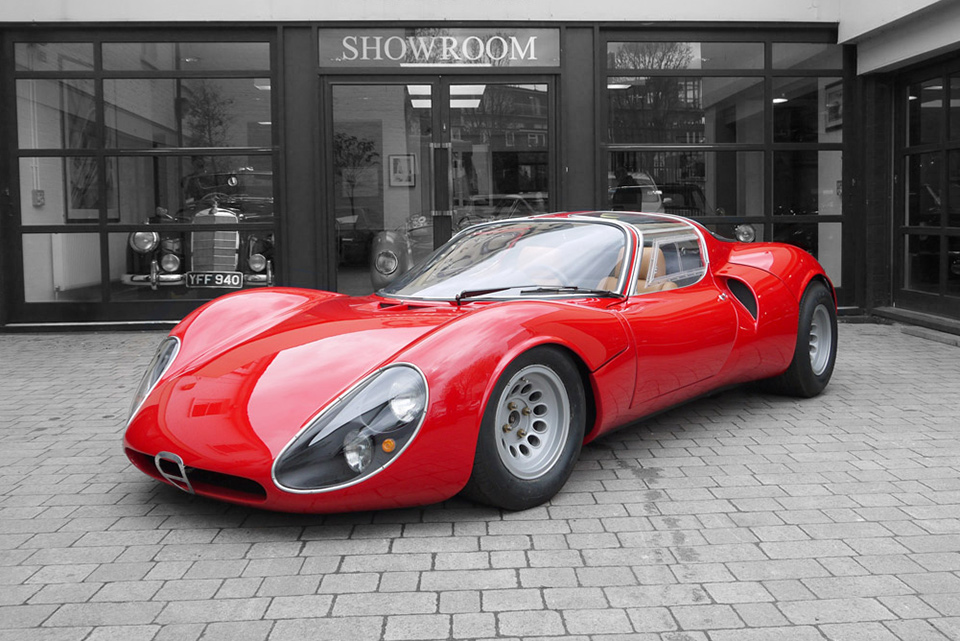21 May 2022
Between 1967 and 1969, Alfa Romeo built a handful (18 to be exact) of the Alfa Romeo 33 Stradale.
In Italian, Stradale means road-going, often used by Italian car manufacturers to produce a motor car that is a street-legal version of a racing car; in this case, the 33 Stradale was developed from the Tipo 33 Sports.
The 60s was a time of significant artistic development for the motor industry, with Italy leading the pack; one such creation was the 33 Stradale, one of the most beautiful and one of the first Supercars.
In the early 60s, Giuseppe Luraghi was appointed CEO of Alfa Romeo; not only was he responsible for the revival of Alfa’s motorsport interests but also for leading the development of the road-legal race car, the 33 Stradale.
It was developed alongside the Tipo 33 race car, sharing a similar aluminium tubular chassis and powertrain. The mid-mounted V8 was a newly developed race-bred engine that bore no relation to Alfa’s other mass-produced vehicles.
Franco Scaglione’s styled the Stradale, both aeronautically and artistically. The body was Peraluman Aluminium, the commercial name for aluminium, whose principal alloy element is magnesium. Then lovingly moulded into a sensual collection of curves and proportions that have been weakening knees since Alfa first showed the prototypes in the autumn of 1967 in Monza and Turin.
Although the looks are stunning, let’s not forget that looks without performance are not the complete package; suffice to say, the 2.0-litre V8 engine was sensational. Disappointingly Alfa only produced 18 cars; of the 18, two were prototypes, and six chassis were concept cars. In total, Alfa built only ten actual units.

